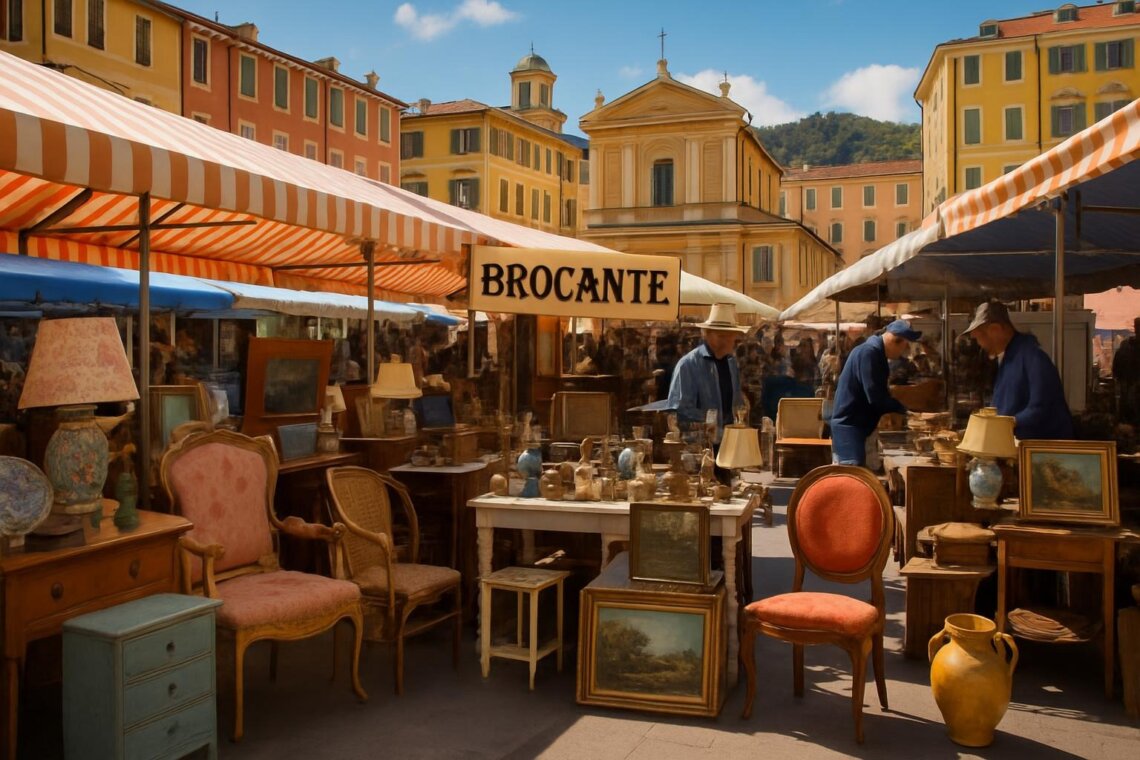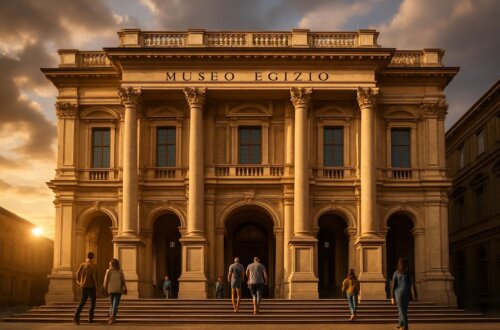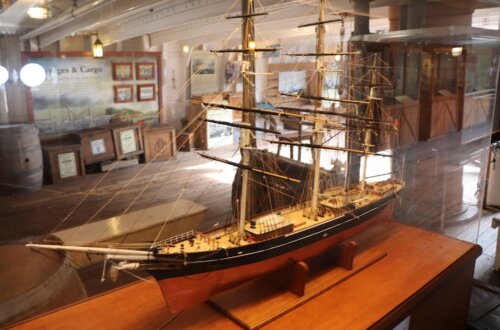
Discover the Best Flea Markets in Nice, France: Your Complete Guide to Vintage Treasures and Local Finds
Discover the Best Flea Markets in Nice, France: Your Complete Guide to Vintage Treasures and Local Finds
Picture this: you’re wandering through narrow cobblestone streets in Nice, the Mediterranean sun warming your face, when you stumble upon a treasure trove of vintage wonders spread across weathered wooden tables. The scent of fresh lavender mingles with the aroma of café au lait from a nearby bistro as you discover a 1920s Art Deco vase that seems to whisper stories of the French Riviera’s glamorous past. This isn’t just shopping—it’s time travel, cultural immersion, and treasure hunting all rolled into one unforgettable experience.
For countless travelers, finding authentic local experiences beyond tourist hotspots remains a challenge. While Nice’s stunning beaches and elegant promenades draw millions of visitors annually, the city’s vibrant flea market scene offers something far more intimate and rewarding. These markets provide a unique window into French culture, history, and the art of living well, where every vintage piece tells a story and every interaction with local vendors becomes a cultural exchange.
Whether you’re a seasoned antique collector searching for that elusive French provincial piece or a curious traveler wanting to bring home something truly special, Nice’s flea markets promise discoveries that go far beyond typical souvenir shops. From the famous Monday market at Cours Saleya to hidden neighborhood gems, this comprehensive guide will transform you from a casual browser into a savvy market navigator, equipped with insider knowledge to uncover the best deals and most memorable finds.
The Ultimate Guide to Nice’s Top Flea Markets
Marché aux Puces de Nice: The Crown Jewel
The Marché aux Puces de Nice stands as the city’s most celebrated flea market, transforming the iconic Cours Saleya into a vintage wonderland every Monday morning. Starting at dawn, over 100 vendors carefully arrange their treasures across the same cobblestones where the famous flower market blooms throughout the week. This isn’t merely a market—it’s a weekly celebration of French collecting culture that has thrived for over 50 years.
What sets this market apart is its incredible diversity. Unlike specialized antique shops, here you’ll find everything from grandmother’s china sets priced at €15 to museum-quality Art Nouveau furniture commanding hundreds of euros. The vendors themselves are as diverse as their merchandise, ranging from professional antique dealers who’ve been working these stones for decades to local residents clearing out family estates filled with generations of accumulated treasures.

The optimal arrival time is between 7:00-8:00 AM, when vendors are still unpacking and the most serious collectors haven’t yet claimed the best pieces. Many vendors drive in from surrounding Provence villages, bringing countryside finds that rarely appear in urban antique shops. This early morning energy is infectious—you’ll witness the ritual of French market culture as vendors greet each other with familiar warmth and share stories over steaming cups of coffee.
Cours Saleya Antique Market: Elevated Elegance
While the Monday flea market offers democratic treasure hunting, the Cours Saleya Antique Market operates on a different level entirely. Running Tuesday through Sunday, this market focuses on authenticated antiques and high-quality vintage pieces. The vendors here are established dealers with proven expertise, often specializing in specific periods or types of items.
Expert dealers like Henri Dubois, who has operated his vintage jewelry stand for over 20 years, can provide detailed provenance for pieces ranging from Victorian mourning jewelry to 1960s designer costume pieces. These relationships with knowledgeable vendors become invaluable for serious collectors, as they often have access to private collections and estate sales not available to the general public.
The price points reflect this elevated curation—expect to pay €50-500 for most items, with exceptional pieces reaching into the thousands. However, the quality and authenticity assurances make this market ideal for investment purchases or special gifts requiring verified authenticity.
Marché de la Libération: Neighborhood Charm
Every Saturday morning, the Marché de la Libération offers a delightfully local alternative to the tourist-focused Cours Saleya markets. Located in Nice’s residential Libération neighborhood, this market perfectly blends flea market finds with local produce vendors, creating an authentic French market experience that many visitors miss entirely.
The atmosphere here feels distinctly neighborly—locals arrive with wheeled shopping carts, greeting vendors by name and discussing family news alongside price negotiations. The flea market section, while smaller than Cours Saleya, often yields unexpected treasures precisely because it attracts fewer tourists and dealers. Local families bring items from attics and closets, often pricing them more for clearing space than maximum profit.
What to Find at Nice Flea Markets: Treasures Worth Hunting
French Antiques and Vintage Specialties
Nice’s flea markets excel in French provincial furniture and décor, reflecting the region’s rich artistic heritage. Provence-style painted furniture, often featuring the distinctive blue and yellow colors of southern France, appears regularly at reasonable prices. These pieces, ranging from small side tables (€40-80) to large armoires (€200-600), offer authentic French country charm that’s difficult to find outside the region.
Vintage French fashion represents another market specialty, particularly items from the 1920s-1960s when the French Riviera epitomized international glamour. Original 1950s sundresses, vintage Hermès scarves, and authentic French perfume bottles create a tangible connection to Nice’s golden age of tourism. Many vendors specialize in these fashion items, understanding both their historical significance and contemporary collectible value.
The markets also feature extensive collections of Provençal pottery and ceramics, including pieces from famous regional producers like Vallauris, where Picasso once worked. These functional art pieces range from simple serving bowls to elaborate decorative vases, often featuring the bright colors and bold patterns characteristic of Mediterranean pottery traditions.

Riviera-Specific Collectibles
The unique location of Nice’s markets creates opportunities for Riviera-specific collectibles that rarely appear elsewhere. Vintage tourism memorabilia from the early days of Côte d’Azur travel, including 1930s hotel luggage labels, original casino chips, and Art Deco travel posters, tells the story of this region’s evolution into an international destination.
Maritime antiques hold special significance here, from vintage nautical instruments to model ships and lighthouse artifacts. These items connect to Nice’s identity as both a working port and pleasure destination, offering collectors pieces that embody the Mediterranean maritime culture.
Local artist works frequently appear at reasonable prices, including pieces by artists who may have lived and worked in Nice but haven’t yet achieved widespread recognition. These purchases can prove both aesthetically rewarding and financially wise as the regional art market continues developing.
Essential Tips for Flea Market Success in Nice
Mastering the Art of French Bargaining
Bargaining in French flea markets requires understanding cultural nuances that differ significantly from markets in other countries. French vendors appreciate directness but expect politeness—begin conversations with “Bonjour” and maintain respectful tone throughout negotiations. The initial asking price typically allows for 20-30% reduction, though this varies based on item value and vendor type.
Professional dealers often have less negotiating flexibility than casual sellers, but they may offer discounts for multiple purchases or cash payments. Building rapport through genuine interest in item history often proves more effective than aggressive price demands. Many vendors enjoy sharing stories about their pieces and may reduce prices for buyers who demonstrate real appreciation for the items’ significance.
The phrase “Quel est votre meilleur prix?” (What is your best price?) works better than immediate counteroffers. This approach allows vendors to maintain dignity while offering genuine reductions. End-of-day shopping (after 2:00 PM) sometimes yields better deals, as vendors prefer selling to packing and transporting items home.
Essential Preparation and Tools
Successful flea market shopping requires strategic preparation. Cash remains king at French flea markets—many vendors don’t accept cards, and those who do often prefer cash for better prices. Bring small bills for easier transactions and faster negotiations.
A measuring tape proves invaluable for furniture purchases, especially when considering transportation logistics. Many visitors make expensive mistakes buying pieces that won’t fit in their luggage or chosen shipping methods. Similarly, a small flashlight or phone light helps examine items in crowded, shaded market areas where details might be missed.

Quality shopping bags or a wheeled cart protects purchases while enabling hands-free browsing. Many markets sell reusable bags featuring market logos, which make excellent souvenirs while serving practical purposes.
Language Essentials for Market Success
While many vendors speak basic English, learning key French phrases dramatically improves market experiences and often results in better prices. Essential phrases include:
- “Combien ça coûte?” (How much does this cost?)
- “C’est trop cher” (It’s too expensive)
- “Pouvez-vous faire un prix?” (Can you give me a better price?)
- “D’où vient cet objet?” (Where does this item come from?)
Numbers in French become crucial for price negotiations. Practice counting to 100, paying special attention to the unique French number system (particularly 70-99). Most vendors appreciate attempts to speak French, even imperfectly, and this effort often translates into friendlier service and better deals.
Navigating Nice Flea Markets Like a Local
Transportation and Logistics
Getting to Nice’s flea markets requires minimal planning thanks to the city’s excellent public transportation system. The Cours Saleya markets are easily accessible via the Nice Tramway Line 1, exiting at Opéra-Vieille Ville station and walking five minutes through the charming Old Town streets.
For markets like Libération, city buses provide convenient connections from major hotels and the central train station. The Nice Côte d’Azur Card offers unlimited public transportation plus museum entries, making it valuable for visitors combining market visits with cultural activities.
Parking near popular markets can prove challenging, especially during summer months. The Cours Saleya underground parking garage offers the most convenient access to the main markets, though rates can reach €3-4 per hour. Alternative street parking exists in surrounding neighborhoods, but requires early arrival and careful attention to time limits and restrictions.
Cultural Etiquette and Local Customs
French market culture emphasizes respect for vendor spaces and merchandise. Always ask permission before handling fragile items, and avoid disruptive rearrangement of displays. Vendors invest significant time creating attractive presentations, and maintaining these arrangements shows basic courtesy.
Photography etiquette varies among vendors—always request permission before photographing people or their merchandise. Many vendors welcome photos of their general displays but prefer avoiding shots that might help competitors identify their sources or pricing strategies.
The traditional French greeting ritual applies at markets: say “Bonjour” when approaching a stall and “Au revoir, bonne journée” when leaving, regardless of whether you purchase anything. This politeness often leads to friendlier interactions and sometimes special pricing consideration.
Making the Most of Your Nice Flea Market Experience
Creating Perfect Market Days
Combining flea market visits with other Nice attractions creates memorable full-day experiences. The Cours Saleya location makes it easy to transition from morning market browsing to afternoon beach time or Old Town exploration. Many visitors successfully combine Monday market visits with nearby attractions like the Palais Lascaris museum or a stroll through the historic Rossetti Square.
Local restaurants around the markets offer perfect breaks between browsing sessions. Chez Pipo serves exceptional socca (chickpea pancakes), a Nice specialty, just steps from Cours Saleya. Similarly, Jan restaurant provides upscale dining for special market celebration meals.

The markets also integrate beautifully with Nice’s seasonal events. During summer, evening concerts in nearby squares create perfect post-market entertainment. Winter visitors can combine market visits with Christmas market exploration and seasonal restaurant specialties.
Shipping and Transportation Solutions
For significant purchases, professional shipping services operate near major markets. Companies like “Côte d’Azur Shipping” specialize in antique transport and can arrange everything from protective packaging to international delivery. Costs typically range from €50-200 depending on item size and destination.
Airline baggage considerations affect many purchase decisions. Most airlines allow one additional checked bag for international flights, though size and weight restrictions apply. Fragile items require professional packaging, and insurance becomes essential for valuable pieces.
Some vendors offer holding services for regular customers, storing purchases until visitors arrange shipping or return with appropriate transportation. These relationships develop over multiple visits and demonstrate the value of building vendor connections.
Seasonal Guide to Nice Flea Markets
Spring Markets: Peak Season Magic
Spring (March-May) represents optimal flea market season in Nice. Comfortable temperatures, minimal rainfall, and increasing daylight hours create perfect browsing conditions. Vendors emerge from winter hibernation with fresh merchandise, including items they’ve been storing for better weather presentation.
Tourist numbers remain manageable during spring, allowing more relaxed browsing and better vendor interaction opportunities. Many vendors schedule major acquisitions to debut during spring months, knowing that both local and international collectors prefer shopping in pleasant weather.
Summer Considerations
Summer markets (June-August) require different strategies. Extreme heat makes early morning visits essential—by 10:00 AM, temperatures can become uncomfortable for extended browsing. However, summer brings extended market hours and special evening events that showcase markets in entirely different atmospheres.
Tourist volume peaks during summer, increasing competition for the best pieces but also bringing more vendors and larger selections. Prices may be higher due to increased demand, but the overall energy and selection often compensate for reduced bargaining success.
Conclusion: Your Next French Adventure Awaits
Nice’s flea markets offer far more than simple shopping opportunities—they provide authentic cultural experiences that connect you directly with French history, artistry, and the joie de vivre that defines Mediterranean living. From the moment you first hear vendors calling out their morning greetings at Cours Saleya to your final farewell handshake with a dealer who’s become a friend, these markets create memories that long outlast any individual purchase.
The treasures you’ll discover tell stories spanning centuries of French craftsmanship, from provincial furniture crafted by village artisans to elegant fashion pieces that graced Riviera soirées. But the real magic lies in the human connections—conversations with passionate vendors, shared excitement with fellow treasure hunters, and the satisfaction of supporting local tradition while finding something truly special.
Armed with the insider knowledge from this guide, you’re ready to navigate Nice’s markets like a seasoned collector. Remember to arrive early, bring cash, practice your French phrases, and most importantly, remain open to serendipitous discoveries. The perfect vintage piece might be waiting just around the corner, but the experience of finding it among friends in one of France’s most beautiful cities will prove equally valuable.
Your French Riviera adventure begins the moment you step onto those historic cobblestones. Bon marché!




